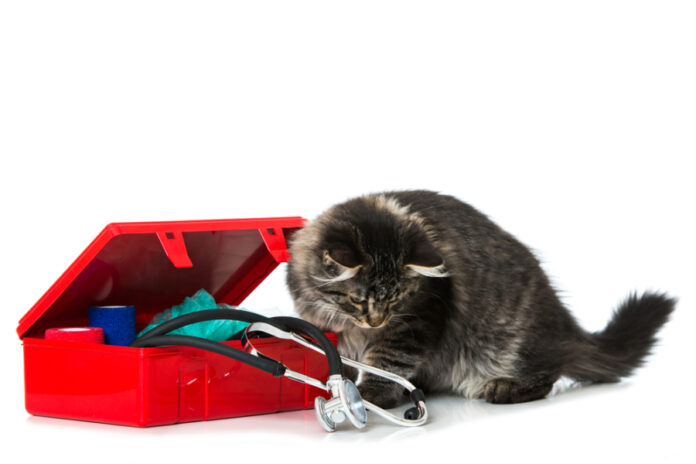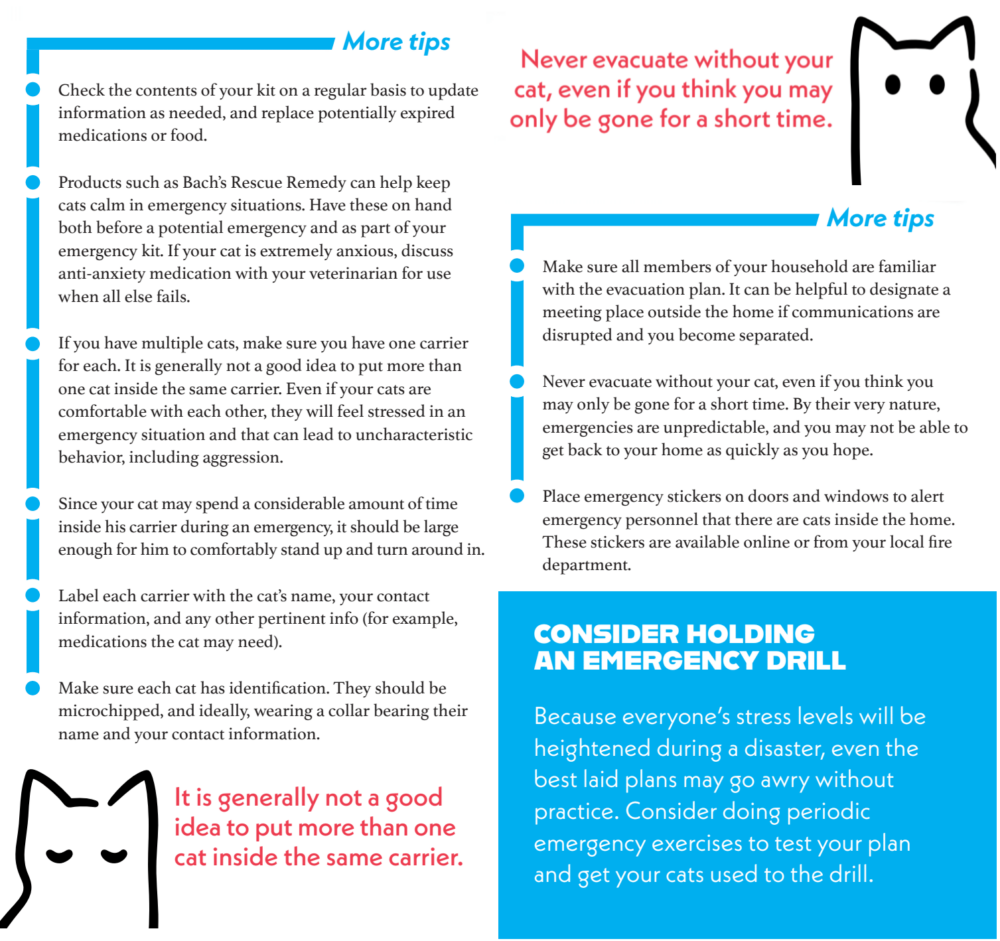Emergency Preparedness for Cats

Having to evacuate due to a disaster can be particularly stressful for cats. Here’s how to create a feline-friendly emergency plan for your kitties.
Natural disasters are becoming more frequent. Wildfires, floods, hurricanes, tornadoes, blizzards: any of these may force you to leave your home on short notice. Evacuating is often easier for dogs, and some may even consider it a fun adventure; simply clip on a leash and a dog will follow you anywhere. But most cats are creatures of habit, and having their normal routines and environments disrupted results in stressed-out kitties that may end up running and hiding. It’s therefore crucial to have a cat-friendly emergency plan in place in the event you ever have to leave your home in a hurry. For a comprehensive plan, consider the following suggestions and tips.
GET HIM USED TO HIS CARRIER
Train your cat to accept being in his carrier long before an actual emergency occurs. If he only ever enters it when it’s time to visit the vet, he’ll have a negative association with it. Leave the carrier in an easily-accessible location where your cat spends a lot of time, and make it attractive with treats or food, or by creating a cozy napping spot inside it. Some carriers double as comfortable beds, making them ideal for emergency situations. By making your cat’s carrier a familiar part of his environment, he is much more likely to go into it without fuss during an emergency.
PUT TOGETHER A FELINE EMERGENCY KIT
Prepare an emergency supply kit that contains enough food, water, and litter to last several days. Consider using disposable dishes and litter pans for this purpose. If your cat is on medication or supplements, keep a supply sufficient for several days in the kit, along with copies of your cats’ health and vaccination records in the event you must go to a shelter.
PLAN WHERE TO GO
If possible, make arrangements to stay with friends or relatives in other areas not affected by the disaster. Otherwise, make a list of hotels that will accept cats both in your immediate area and along the evacuation route. You may also consider boarding your cat at a nearby veterinary hospital or boarding facility, but bear in mind that during a widespread disaster, these businesses may be affected as well.
We all hope to never have to put an emergency plan into action, but being prepared will save you precious time, help keep your cat calmer — and may just save his life.

AUTHOR PROFILE

Ingrid King
Ingrid King is a former veterinary hospital manager and author of five cat books, including Buckley’s Story: Lessons from a Feline Master Teacher, and Tortitude: The BIG Book of Cats with a BIG Attitude. Her blog, The Conscious Cat, is an award winning resource for conscious living, health, and happiness for cats and their humans (ConsciousCat.com). Ingrid writes for magazines and websites around the world.




